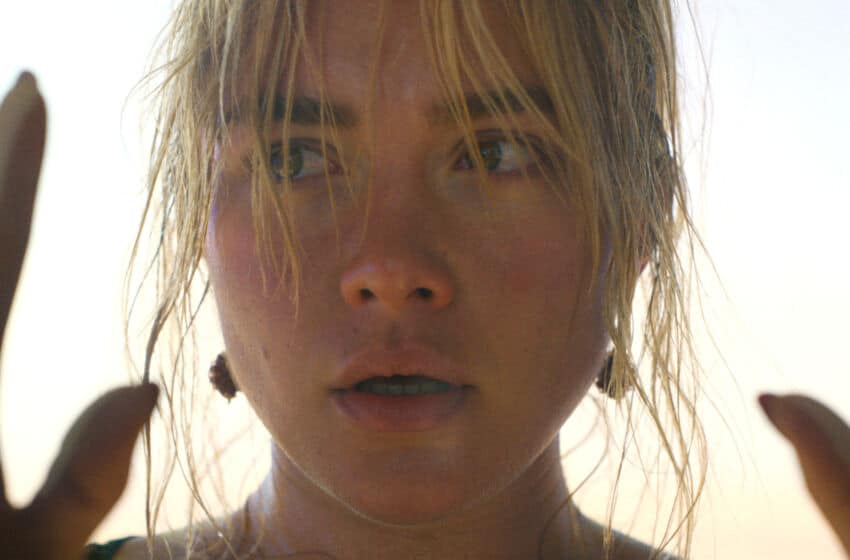Find out theories about the most anticipated film of the fall.
By now, we are all highly anticipating the release of Olivia Wilde’s Don’t Worry Darling, a psychological thriller starring Florence Pugh and Harry Styles. The pair play a 1950s couple living in an experimental utopian community, where audiences are presented with a seemingly perfect way of life.
Alice (Florence Pugh) starts experiencing moments of hysteria and mania when her husband Jack (Harry Styles) takes up a new job working for Chris Pine’s character, Frank in the ‘Victory Project’. These moments don’t seem to just be happening to Alice. Other women in the ‘utopia’ begin experiencing similar things, or so they seem to, from Alice’s perspective.
It seems, however, that whatever the men are up to, Alice is determined to find out.
The second trailer for the film just dropped and fans are starting to recognize the patterns that trigger Alice’s ‘psychotic breaks.’ Where we can’t discuss all the possible easter eggs in these trailers, we have gathered a few moments that provoke our suspicions.
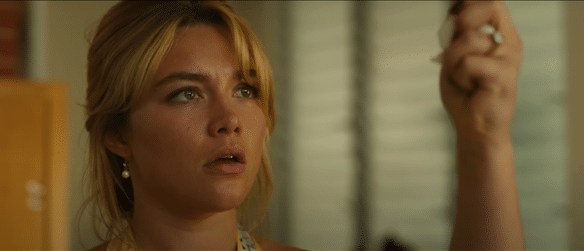
All Eggs in One Basket
One of the key moments that introduce Alice’s qualms is when she is in her kitchen and takes an egg from the carton while cooking. Upon inspection, however, she crushes the egg in her hand and inside we see…nothing. The 50s has always been romanticized but within this community, everything great about the time is heightened, they are beyond stress, worries, and problems…so why does this scene create such a disturbing feeling in audiences?
A lot can be taken from this scene, an egg usually symbolizes fertility but with the lack of the albumen, we can assume that it represents the couple’s childlessness…come to think of it, there are seemingly no children in this community at all. Representing the façade they live in and ‘surface-level’ concerns, we can interpret this scene to show the oppression women of the actual 50s experienced. Not only were women encouraged to walk on ‘eggshells’ around their husbands; but having something so necessary to a housewife’s kitchen essentials become polluted creates an emotive moment for the audience.
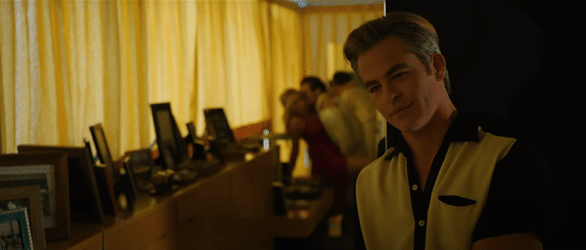
Too Close for Comfort
The trailers open audiences up to being onlookers to the most intimate of moments between Jack and Alice. Where the couple engages in some steamy scenes, we are given a warped and almost violent interpretation of sex, significantly contrasting their pristine lifestyles. The raw and animal-like relations place significant importance on their physical relationship as the glue holding them together.
One scene creates an even more uncomfortable experience for viewers wherein we see Chris Pine’s character, Frank, watching Alice and Frank being intimate. As suspected from Alice’s recent ‘hallucinations’, we assume that Frank is not actually there per se, but a heavy sense of voyeurism and Truman-show likeness still settles on audiences. Creating an invasive moment for viewers, we can link the feeling of being watched in our most vulnerable states to the prurience women experience from society daily. From over-sexualization via the representation of women as men’s ‘playthings’, to the harmful representation of sex in the Porn Industry through Alice and Jack, Wilde creates a social commentary through Don’t Worry Darling.
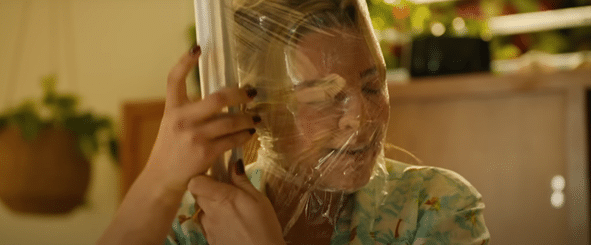
One Breath In, One Breath Out
Where social commentaries are concerned, Wilde does not stop with the sexualization of women. In many scenes scattered throughout the trailers, we see Alice experiencing intense moments of claustrophobia. From cleaning her windows to being squished up against them to nearly drowning in her own bathtub, Wilde has Pugh in an array of uncomfortable positions. But what does this do? Why should we care?
Societally women have been suffocated by gender norms and expectations before they even knew what was happening. These norms have been instilled and re-enforced for generations and the 50s was the height of this influence. One scene in particular breeds a lot of theories for its intensity and anomalous to the ‘perfect’ life Jack and Alice lead, wherein Alice covers her face and head with plastic wrap, smothering herself and eventually ripping it off and breathing deeply.
This scene offers an array of theories, most involving references to rebirth, resurrection, death and women’s inability to escape societal norms. In addition, this scene greatly resembles René Magritte’s The Lovers which represents the helplessness one feels about not being able to unveil their true selves to those who they love, similar to what Alice feels about her relationship with Jack.
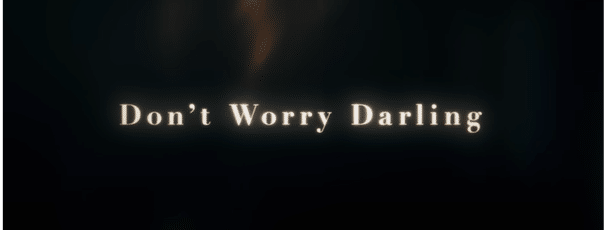
Wilde is giving audiences a ‘patriarchal fiction’; wherein the main protagonist (Alice) represents the fear of female transgression that populates the minds of many men; i.e. she questions the ‘Victory Project’, does not need to bear children to be happy and defies her husband instead of staying obedient to him.
This still however begs the question; Are Alice’s hallucinations real? And where do we draw the line between reality and our own imaginations?


